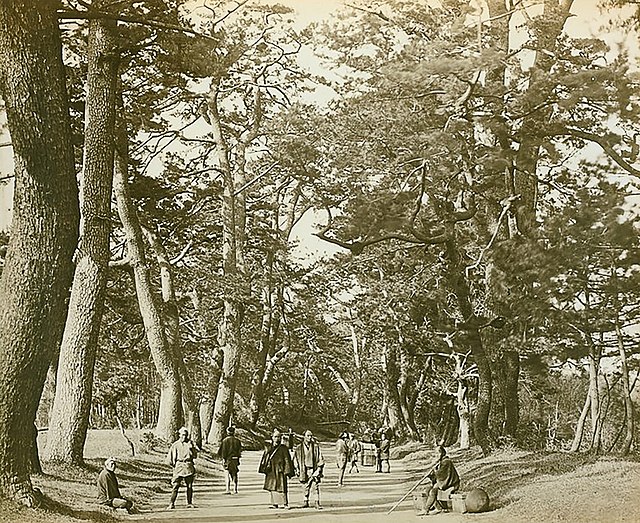53 Stations of the Tōkaidō
The 53 Stations of the Tōkaidō are the rest areas along the Tōkaidō, which was a coastal route that ran from Nihonbashi in Edo to Sanjō Ōhashi in Kyoto. There were originally 53 government post stations along the Tōkaidō, where travelers had to present traveling permits at each station if wanting to cross.
The Tōkaidō in 1865.
Nihonbashi's highway distance marker, from which modern highway distances are measured
Odawara-juku in the 1830s, as depicted by Hiroshige in The Fifty-three Stations of the Tōkaidō.
The countryside around Yui-shuku in the 1830s
The Tōkaidō road , which roughly means "eastern sea route," was the most important of the Five Routes of the Edo period in Japan, connecting Kyoto to Edo. Unlike the inland and less heavily travelled Nakasendō, the Tōkaidō travelled along the sea coast of eastern Honshū, hence the route's name.
Tōkaidō, photographed by Felice Beato in 1865.
Nissaka-shuku, the 25th station on the Tōkaidō, as illustrated by the ukiyo-e master Hiroshige. This print is from the first (Hoeiko) edition of The Fifty-three Stations of the Tōkaidō.
Nissaka Station, Utagawa Kuniyoshi, Tōkaidō gojūsan tsui . Collection Samuel P. Harn Museum of Art (2005.25.7.26) Samuel P. Harn Museum of Art
Goyu Pine Tree Avenue with sidewalk.(w:ja:御油の松並木)







